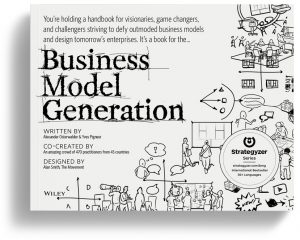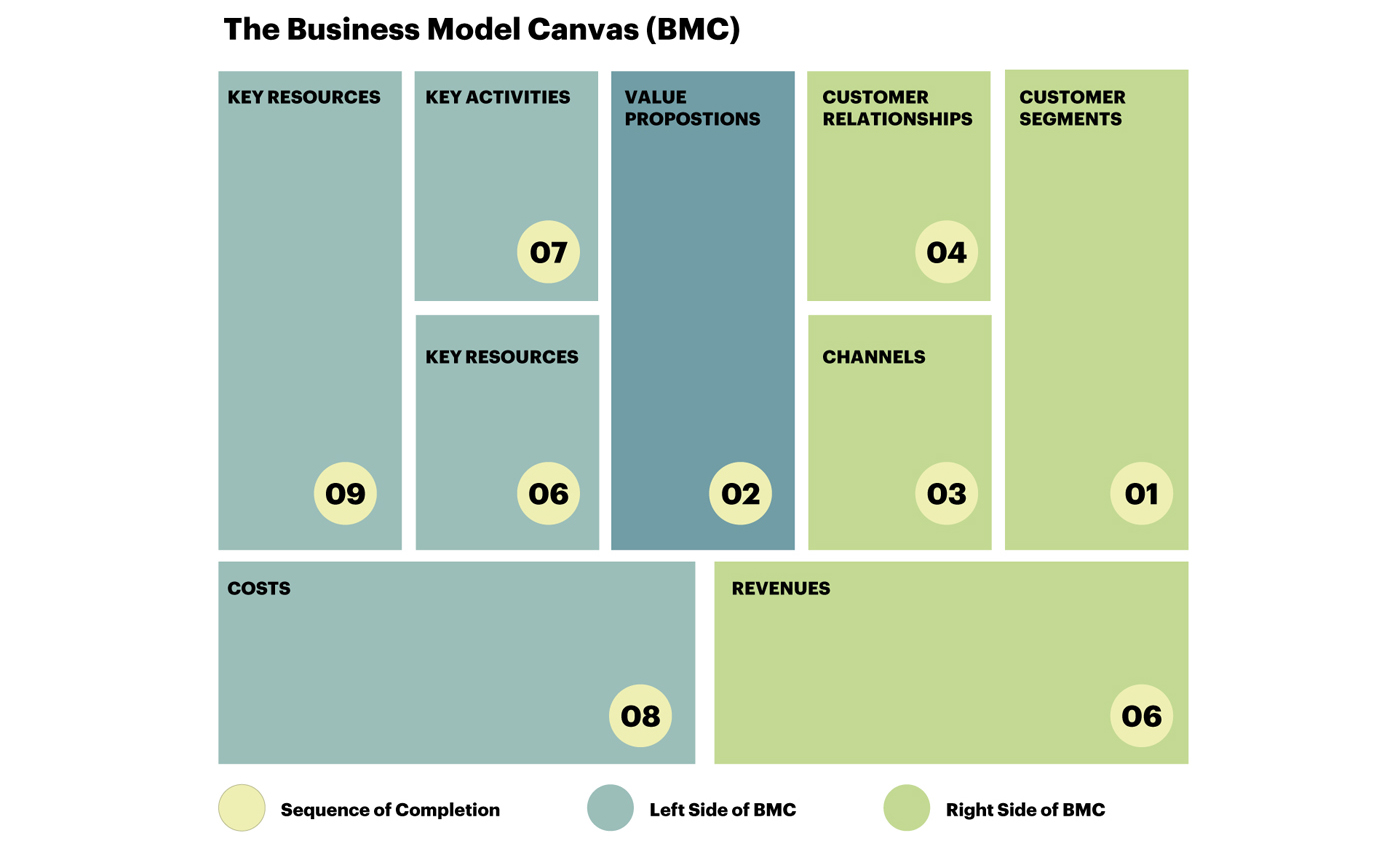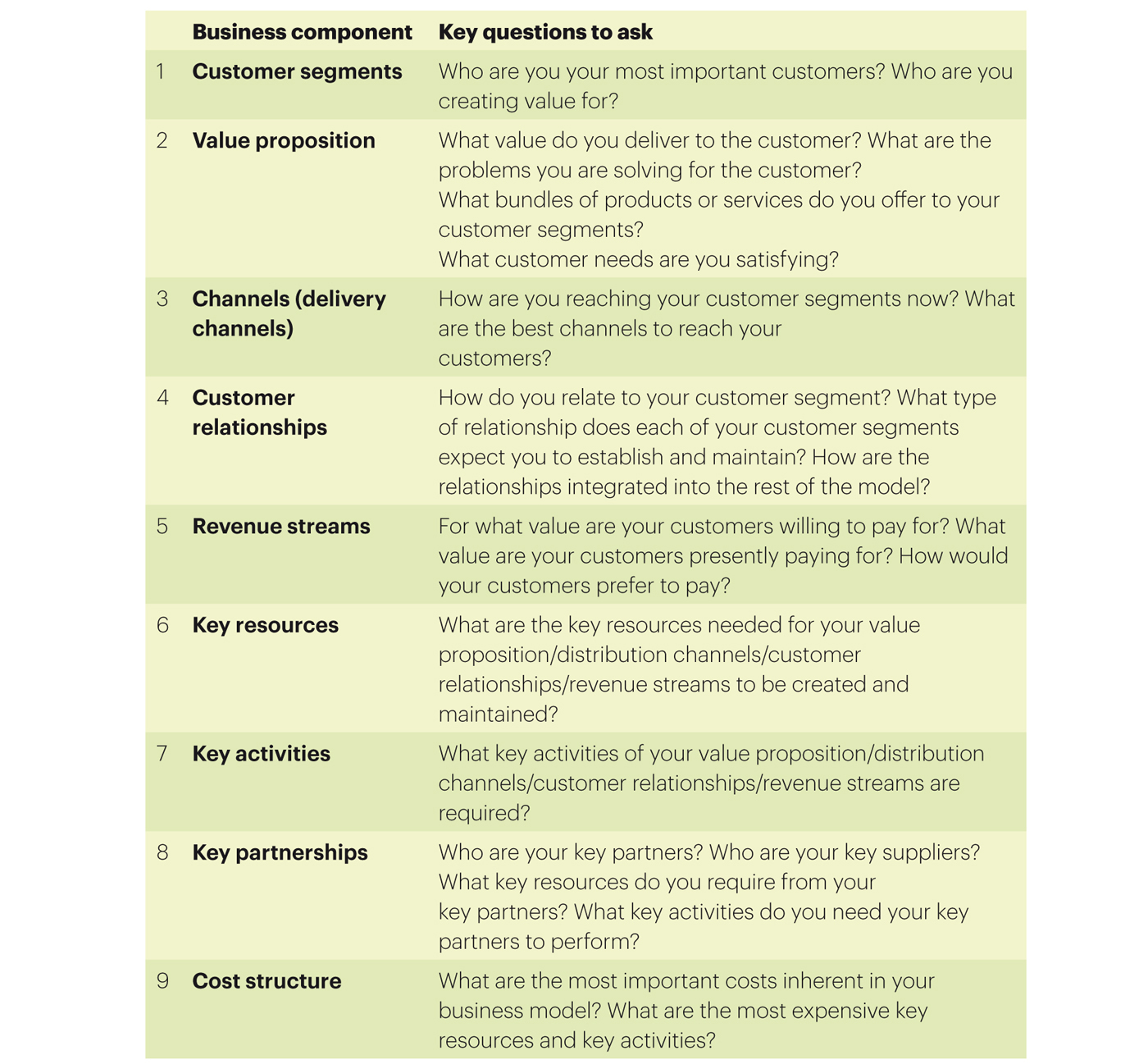The Business Model Canvas: A Strategy Tool For Success
Its simplicity and ease of use allows for a transparent review of all core business components.

By Derek Ariss
It’s been said the world is changing faster and faster. So much change is happening these days in business that we need to review and refresh our business strategies repeatedly to survive. This means more strategy sessions at work and more business plans to be drafted and reviewed. Admittedly, I do a lot of business plan checking these days. It’s not unusual to have a cup of coffee before I read a business plan for particular clients or organisations I work with.
In my experience, the business plan is often a 60-page-plus document. Usually, the document is thick, high on detail and strategic positioning, and low on application/implementation. Often the cup of coffee I started with turns into a pot of coffee. Eventually, I get to the point of matching the plan’s detail with the implementation steps. All good; I appreciate that’s the way things roll these days. But as some of you may be aware, I work in the innovation space as well as consult, and I have been thinking, “There has to be an easier, more transparent way of pulling together the business components for review, modification, discussion, and implementation!”. I have found a better way. It is a strategic tool called the Business Model Canvas (BMC).
The BMC is a simple, powerful strategic template that lets business people identify the critical core components of a business and easily see how these components interact. What makes it easy to see?
Instead of the strategy being on tens of pages like a formal business plan, the BMC presents all the information on one page. Yes, the whole thing is on one page. The BMC format makes it practical to fill out and very easy to review all the core business component interactions. WOW.
By design, the top-down view of the BMC allows real-time collaboration between any group of participants. Participants fill out a template together and discuss issues as the document is completed. I find it curious that the BMC is taught in most MBA Classes and almost all entrepreneurship classes. Yet, the BMC is seldom used when it comes to day-to-day working environments.
This article aims to promote using the BMC as a simple and powerful strategic business tool.
In this article, I will:
Let’s first be clear on what a business model is.
For any business, a business model describes the rationale of how an organisation creates, delivers, and captures value. Value, believe it or not, is often but not always in the form of money.

Three parts make up a business model: They are (Figure 1):
Once you understand how the business model works, you must also appreciate that business models change over time. Let’s look at an example of how a grocery store used to operate 20 to 30 years ago. The grocery store created value by collecting all the produce and goods from farmers, butchers, and local manufacturers. Value was delivered to customers to visited the grocery store and bought the quantity they needed. Value was then captured in the form of cash exchanged at the cash register.
Today, the process may still be the same for the grocery store. However, new organisations like RedMart and HelloFresh are changing the way people get groceries and the way they eat. In turn, they are also changing the business model.
For example, when using RedMart, the customer uses an application (app) to order groceries online (value creation). Groceries are delivered to the customer’s residence at a pre-arranged time (value delivery). Payment is made online (value capture).
To take the value creation process further forward, HelloFresh creates value by developing recipes for their customers and then delivering the produce for these recipes to the customer directly. The customers don’t have to go shop for specific groceries or leave their homes. With HelloFresh, payment is made on their website via credit card using a subscription-based model. Notice how the business model for the grocery store has changed.
As technology has changed the playing field, many organisations have arisen due to their efforts to change their business models:
Hence, understanding how business models work is becoming more and more relevant to strategy, business reviews, and innovation.

In 2004, Alexander Osterwalder searched for a single definition of a business model. His academic paper entitled The Business Model Ontology – A Proposition In A Design Science Approach was concerned with looking at various business model definitions to create one that would work. It was from this research that the BMC arose. Thus, Osterwalder and Yves Pigneur wrote a book called Business Model Generation in 2010 in which the BMC was introduced.
Similar to a Mind Map, where all the ideas of a concept are interconnected and put onto one page, the BMC does this when reviewing a business model. Everything you need to know is on one page, without flipping or referring to different components. This creates an accessible, easy-to-understand top-down view of the business.

The easiest way to use and access the BMC is to download the free template from Osterwalder’s Strategyzer website.
Once the template is downloaded, you will see that it is comprised of nine parts. All businesses are made up of these parts. Fill out the respective components with information you know about your business. This can be done as a group activity with a team or as an individual. Typically, the canvas is filled out with a group of peers because it allows for conversation and collaboration. When filling out the canvas template, the participants answer questions about each of the nine sections of the canvas on the BMC template and fill it out on the BMC (Figure 2).

The nine components of the BMC are:
1 Customer segments – who are your customers?
2 Value proposition – what value do you offer your customers?
3 Channels (delivery channels) – what channels do you use to deliver value to your customers?
4 Customer relationships – how do you interact with your customers?
5 Revenue streams – how do you generate revenue?
6 Key resources – what key resources do you need to run your business?
7 Key activities – what are the key activities of your business?
8 Key partnerships – who do you have strategic partnerships with?
9 Cost structure – what are your fundamental costs?
When completing the BMC, you look at these parts in detail.
For readers considering completing a BMC, included in the following table are key questions to ask (Figure 3).
As the information is completed, we see the business model for the business unfold.
To fill out the BMC, experience shows that completing the questions in the order listed in Figure 3: Key Questions works best.
To illustrate the best sequence to complete the BMC, follow the numbers in Figure 2.
Following this sequence of filling out the BMC will feel like connecting the dots in a connect-the-dots game. At first, the dots look random. As you start connecting the dots, an image forms, and finally, when all the dots are connected, the image is crystal clear.
Similarly, when completing the canvas, you work through each of the nine business components in sequence. Once done, the entire image of your business model is clear.
Tip: By following this sequence, the right side of the BMC gets filled out first.
The right side of the BMC focuses on the customer or market. These factors include identifying your audience and distributing the product or service. Note the revenue stream is considered part of the right side of the BMC.
The left side of the BMC focuses on the business’s internal factors, such as design, supplies, production, and costs, and gets filled out second.
Both sides of the BMC link with the value proposition in the middle, showing the value exchange between your business and your customers.
Overall, the nine business components are filled out and presented in this easy-to-see format. This makes reviewing your business model straightforward and clear.
Completing a BMC and strategy can be done collaboratively with a face-to-face group around a table physically or digitally on a white board. Either method works to allow meaningful discussion and thought between colleagues in about 45 to 60 minutes.
The most significant benefit of the BMC is the team application of the canvas to review, plan, and innovate your business strategy.
Traditionally the BMC has been used for applications, such as:
However, I suggest this template be used for operational business reviews, especially around budgeting times. This permits teams to review all parts of their existing business models quickly, efficiently, and collaboratively.
With the BMC, everyone in the organisation can add to the strategic input of the business.
Bringing these factors together, from its simplicity and ease of use to its quick, transparent review of all core business components, you can understand why the BMC is a powerful strategic tool.
And yes, I like it more than most business planning tools because it delivers great results and saves me from drinking so much coffee.
Derek Ariss is Head of Innovation Education at Lightbulb Capital and is responsible for building the education practice, focusing on creativity, design thinking, technology, culture, and mindset conducive to innovation in finance. Derek also teaches part of the Singapore Management University (SMU) Certificate in FinTech and Innovation course and an Innovation Culture Catalyst course at SMU. He holds an MBA in International Marketing and Strategy and Bachelor of Commerce (Hons) from the University of Windsor, Canada, and a Bachelor of Science in Psychology and Biology.